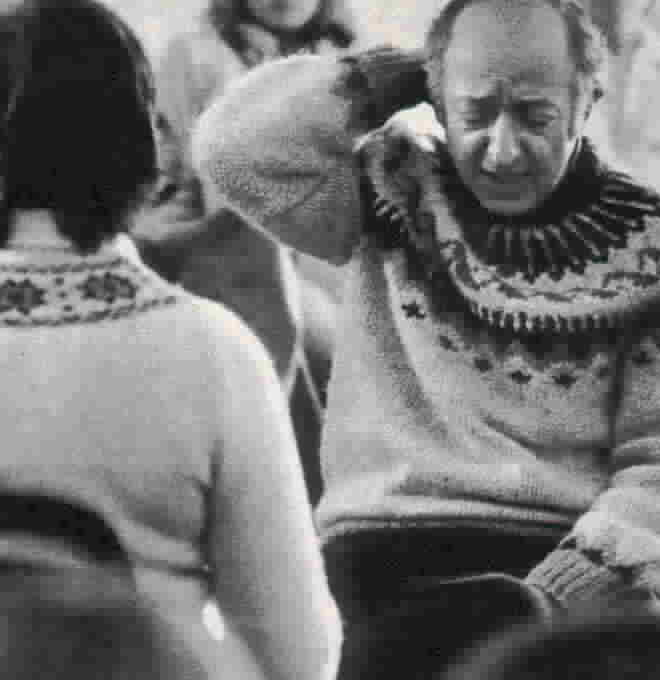ATNR

Asymmetrical tonic neck reflex.
1. A gross motor reflex which provides neural programming for
basic postures of the torso and limbs (e.g., in crawling and
reaching). 2. The anatomical "fencing
posture," produced by turning an infant's head to one side (e.g.,
leftward), showing a. arm extension and upward
palm-rotation of the "face" or "jaw hand" (i.e., baby's right hand in this
case), and b. arm flexion and palm pronation
of the "head" or "skull hand" (i.e., baby's left; Peiper 1963:156).
3. Reflexive in infancy, fragments of ATNR emerge as nonverbal
signs in stressful, emotional, or physically demanding
situations, and in sleep.
Usage: ATNR provides the basic wiring for one of our most telltale
mood signs, the hand-behind-head. ATNR's reflexive, brain-stem
circuitry makes this unconscious gesture a trustworthy indication of
disagreement, uncertainty, frustration, and anger.
Art. Michelangelo's The Three Labours of Hercules (c. 1530)
and Rodin's The Age of Bronze (1875-76) are classic examples of how
artists may depict strong emotion in tense limb postures released by ATNR. One arm stretched fully forward,
e.g., with the other flexed and curled behind the head, shows feelings powerful
enough to have triggered the reflexive fencing posture.
RESEARCH REPORT: In the ATNR position, an infant
gorilla's face hand clearly shows the palm-up position (Baumgartel 1976:69).
YouTube Video: Watch a two minute video of an infant's ATNR.
Copyright 1998 - 2016 (David B. Givens/Center for Nonverbal Studies)
Photo credit: unknown
